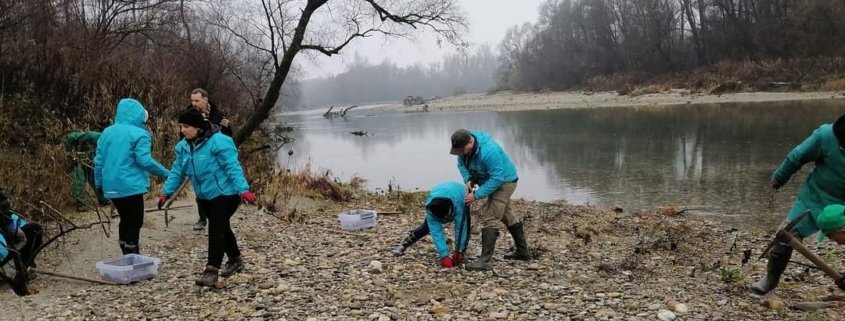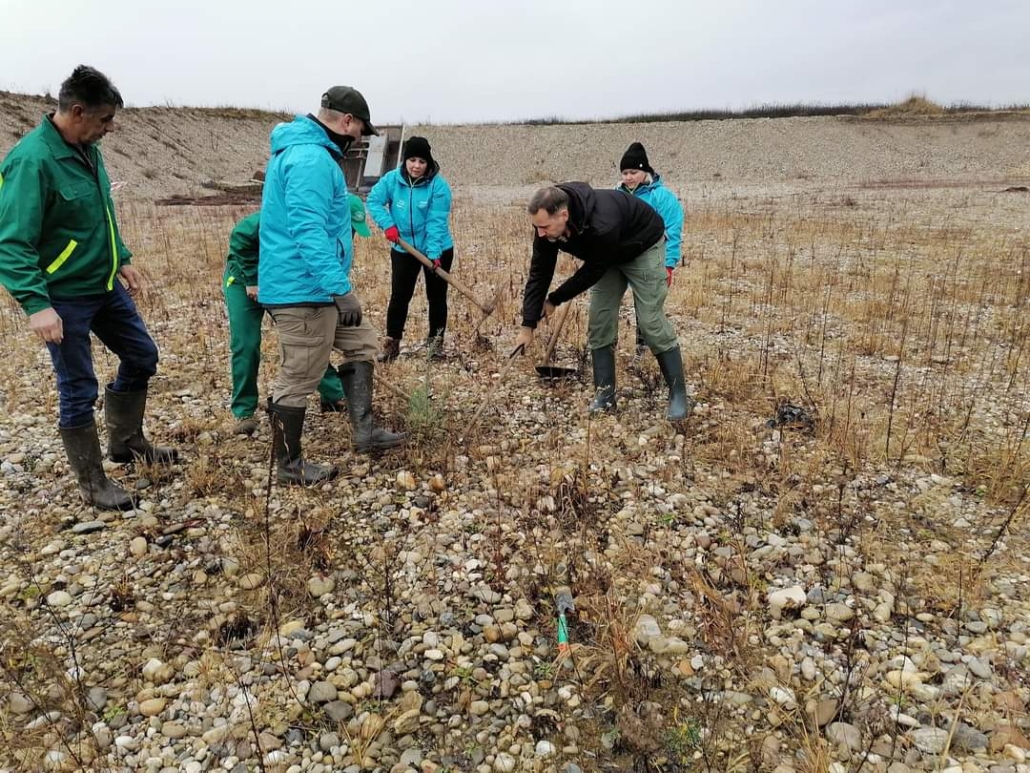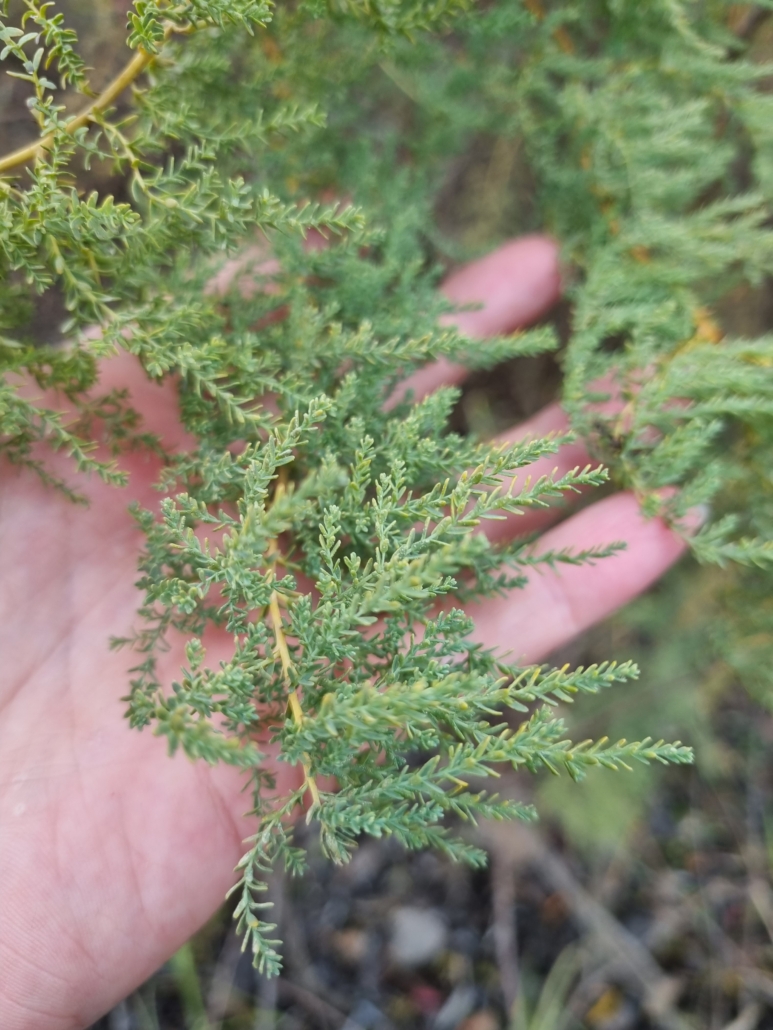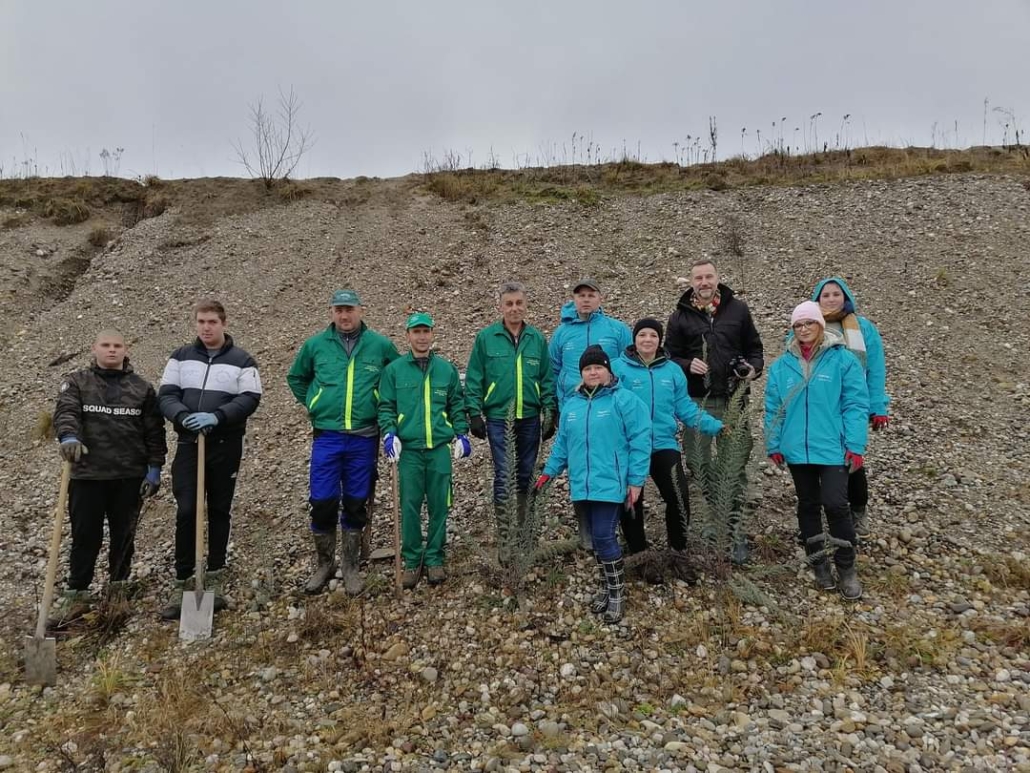 Javna ustanova za upravljanje zaštićenim dijelovima prirode Varaždinske županije
Javna ustanova za upravljanje zaštićenim dijelovima prirode Varaždinske županijeGerman tamarisk successfully reallocated on the natural habitats on Drava River
Fifteen river enthusiasts from, High school Arboretum Opeka, Hrvatske vode, State Institute for Environment and Nature Protection for and State Inspectorate led by Public Institution for Management of Protected Natural Areas in Varaždin County have joined their efforts on Friday the 9th of December 2022 in an action of reallocation of 30 plants from the gravel pit Turnišće to the gravel bar on Drava River downstream of the Ormož lake.

From the cuttings made of two largest plants, employees of the Zagreb Botanical garden and students of the High school Arboretum Opeka will try to produce young rooted plants that can, at later stages, be reallocated on the natural habitats on Drava.
German tamarisk (Myricaria germanica) is pioneer species which grows on gravel banks of rivers and banks of watercourses of the Alps and their foothills. It is a plant adapted to the unique ecological conditions on its habitat which is restricted to the newly created gravel and sand bars of braided rivers. Therefore, these species are considered as indicator species of healthy and natural rivers. German tamarisk has vanished from the natural habitats of the Drava River due to river channelization, construction of hydropower plants, as well as by gravel and sand extraction. Therefore, gravel and sand bars as pioneer habitat types have become very rare in Europe and are one of the most endangered ecosystems. German tamarisk is strictly protected species in Croatia which makes it highly important to ensure the remaining population is secured and well monitored.

This is very valuable activity led by one of the DRAVA LIFE project partners, contributing to already implemented repopulation and reallocation activities of German tamarisk done in previous years.
We hope that the newly reallocated plants will thrive in the new, natural habitat and will spread on the habitats downstream in future years!



